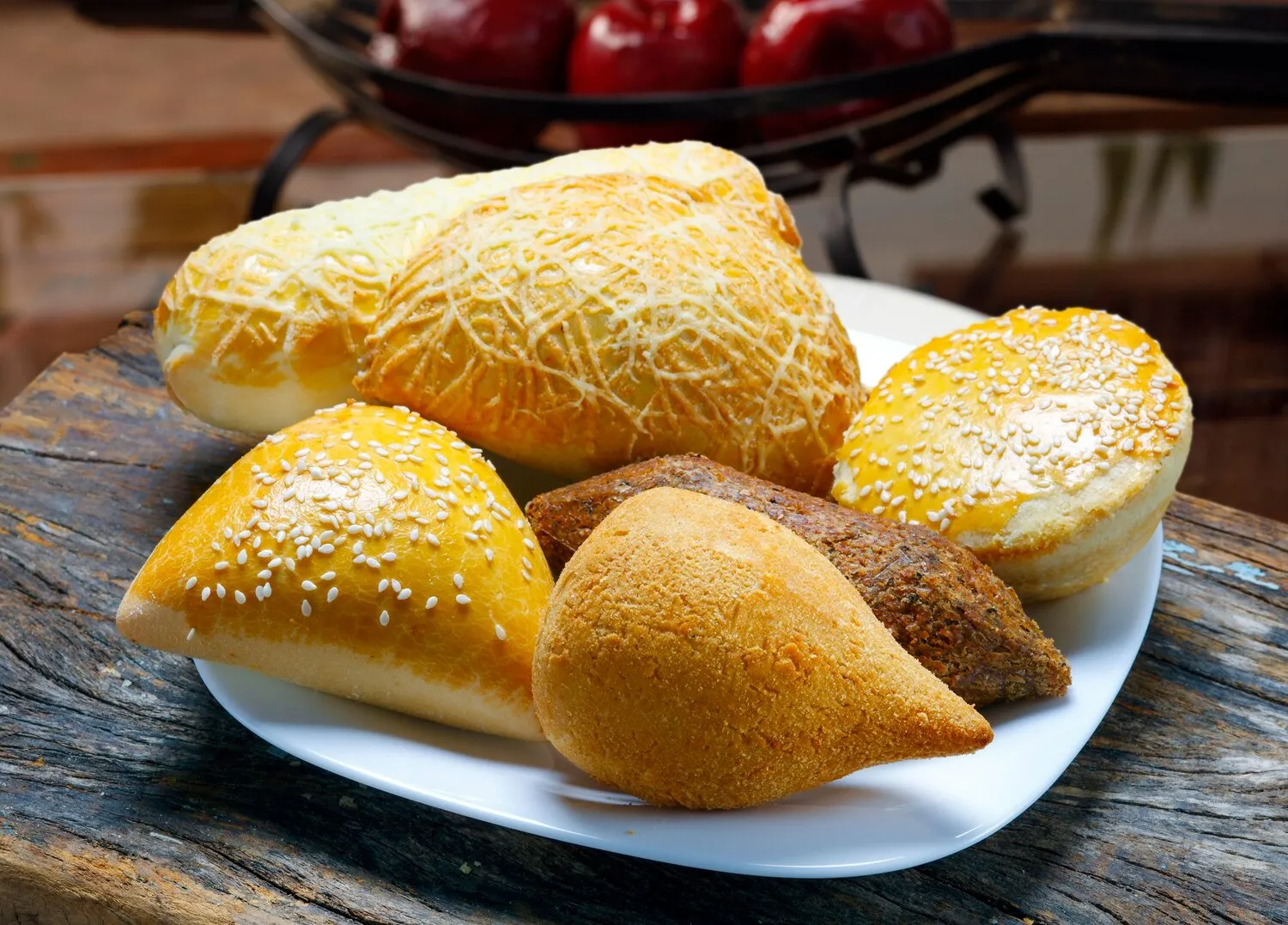
Salgados
Variety of savory pastries, including coxinha, risole, and pastel.
Nutrition Facts
* The % Daily Value (DV) tells you how much a nutrient in a serving of food contributes to a daily diet. 2,000 calories a day is used for general nutrition advice.
Salgados evolved from European culinary influences, particularly Portuguese and French, adapted to Brazilian ingredients and tastes over time. The 'coxinha', for example, is believed to have originated in the 19th century. The popularization of salgados as street food and party snacks occurred primarily during the 20th century.
Salgados are deeply ingrained in Brazilian culture, commonly found at parties, cafes, street food stalls, and gatherings of all kinds. They represent a casual and accessible culinary experience.
Party Staple
Salgados are a must-have at Brazilian birthday parties, weddings, and other celebrations. They are served as appetizers and snacks, providing a variety of flavors to suit different tastes.
Street Food
Ubiquitous at street vendors and 'lanchonetes' (snack bars), salgados are a quick and affordable meal or snack option for Brazilians on the go.
Social Gatherings
Sharing salgados is a common way to socialize and enjoy food with friends and family, reflecting the communal aspect of Brazilian culture.
The flavors of salgados are diverse, ranging from savory and creamy to slightly spicy. They are characterized by their crispy exterior and flavorful fillings.
Common flavors include chicken (coxinha), ground beef (risole de carne), ham and cheese (risole de presunto e queijo or pastel), shrimp (risole de camarão), and hearts of palm (palmito). The dough is typically made from wheat flour, broth (often chicken or vegetable), and seasonings. Specific fillings can be seasoned with herbs, spices, and creamy sauces. Deep-frying contributes significantly to the crispy texture and overall flavor profile.
Dough Consistency
The dough should be smooth and pliable, but not too sticky. Adjust the amount of flour and broth as needed to achieve the desired consistency.
Filling Moisture
Ensure the filling is not too wet, as this can make the salgado soggy. Drain any excess liquid from the filling before assembling.
Frying Temperature
Maintain a consistent oil temperature (around 180°C/350°F) for even cooking and a crispy texture. Avoid overcrowding the fryer, as this will lower the oil temperature.
Explore additional Savory pastry dishes and restaurants
Explore Savory pastryDiscover top dining spots and culinary experiences in Ilhéus.
Explore IlhéusLearn more about the food culture, restaurant scene, and culinary heritage of Brazil.
Explore Brazil